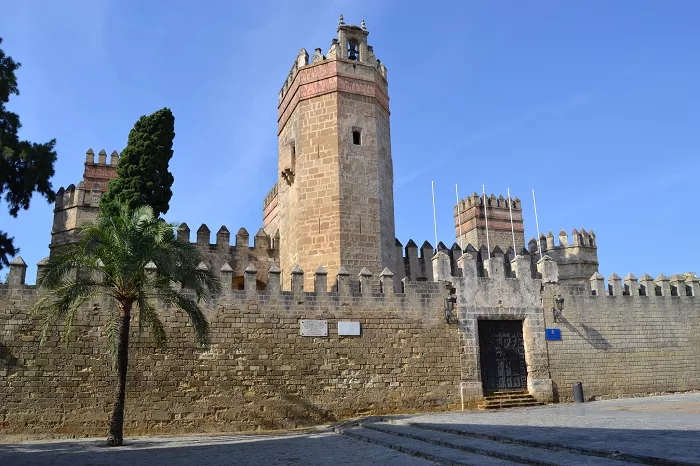St. Augustine, located on Florida’s northeastern coast, holds a significant place in American history. Established in 1565, it is often celebrated as the oldest continuously occupied European-founded city in the United States. This article explores the founding of St. Augustine, its historical significance, and addresses common questions regarding its status as Florida’s oldest city.
Founding of St. Augustine
St. Augustine was founded on September 8, 1565, by Spanish admiral Pedro Menéndez de Avilés. As Florida’s first colonial governor, Menéndez de Avilés established the settlement to serve as a strategic outpost for Spain in the New World. He named the settlement “San Agustín” because his ships first sighted land in Florida on August 28, the feast day of St. Augustine.
Historical Significance
St. Augustine’s establishment predates other notable settlements in the United States. For instance, it was founded 42 years before the English colonized Jamestown in 1607 and 55 years before the Pilgrims landed at Plymouth Rock in 1620. This early establishment underscores its importance in the broader narrative of European colonization in North America.
The city served as the capital of Spanish Florida for over 200 years, playing a crucial role in the defense and administration of Spain’s interests in the region. Its strategic coastal location made it a focal point for military and trade activities during the colonial era.
St. Augustine’s Continuous Occupation
One of the defining characteristics of St. Augustine is its continuous occupation since its founding. Despite challenges such as attacks, diseases, and changing colonial powers, the city has remained inhabited. This unbroken habitation contributes to its recognition as the oldest continuously occupied European-established settlement in the continental United States.
Indigenous Presence Before European Settlement
Long before European explorers arrived, Florida was home to indigenous tribes such as the Timucua, Calusa, and Tequesta. These tribes had established complex societies with rich cultures and traditions. The arrival of Europeans brought significant changes to their way of life, leading to profound cultural exchanges and, unfortunately, conflicts.
Comparison with Other Early Settlements
While St. Augustine holds the title of the oldest continuously occupied European-founded city in the United States, other early settlements also contribute to the rich tapestry of American history.
Pensacola, Florida
Pensacola, located in the Florida Panhandle, was the site of a Spanish settlement established in 1559 by Tristán de Luna. However, this settlement was abandoned after two years due to hurricanes and supply issues. As a result, Pensacola does not hold the same continuous occupation status as St. Augustine. Nevertheless, Pensacola is known as “The City of Five Flags” because it has been governed by five different administrations over its history, reflecting its diverse colonial past.
Jamestown, Virginia
Established in 1607, Jamestown is often cited as the first permanent English settlement in the Americas. While it holds this distinction, its founding came over four decades after St. Augustine’s establishment by the Spanish.
Santa Fe, New Mexico
Founded in 1610, Santa Fe is another early European settlement in the United States. It is recognized as the oldest state capital in the country. However, like Jamestown, its establishment occurred after that of St. Augustine.
St. Augustine’s Cultural Legacy
The rich history of St. Augustine is evident in its well-preserved architecture, historic sites, and cultural festivals. The city’s layout reflects its Spanish colonial origins, with narrow streets and colonial-era buildings that transport visitors back in time.
Notable Historic Sites
- Castillo de San Marcos: This 17th-century fortress is the oldest masonry fort in the continental United States. Built by the Spanish to defend the city, it stands as a testament to St. Augustine’s strategic military importance.
- Cathedral Basilica of St. Augustine: As the oldest Catholic parish in the United States, this cathedral showcases Spanish-inspired architecture and houses numerous historical artifacts.
- St. George Street: A pedestrian-only thoroughfare, St. George Street is lined with historic homes, shops, and eateries, offering a glimpse into the city’s past while serving as a vibrant center for contemporary culture.
Cultural Festivals
St. Augustine hosts various festivals that celebrate its diverse heritage:
- Fiesta de San Agustín: Commemorating the city’s founding, this annual event features reenactments, parades, and concerts that highlight St. Augustine’s Spanish roots.
- British Night Watch: Reflecting the period of British rule from 1763 to 1783, this event includes historical reenactments and a grand procession, illuminating a unique chapter in the city’s history.
Modern St. Augustine
Today, St. Augustine seamlessly blends its historic charm with modern amenities. The city attracts millions of visitors annually who come to explore its rich past, enjoy its coastal beauty, and experience its vibrant arts scene.
Tourism and Economy
Tourism serves as a significant economic driver for St. Augustine. Visitors can explore numerous museums, historic landmarks, and cultural institutions that offer insights into the city’s storied past. Additionally, local businesses, including restaurants, boutiques, and galleries, contribute to a thriving economy that honors tradition while embracing contemporary trends.
Education and Preservation
Institutions like Flagler College, housed in the former Ponce de León Hotel built by industrialist Henry Flagler, play a pivotal role in education and historic preservation.
Conclusion
So, is St. Augustine the oldest city in Florida? The answer is a resounding yes. Founded in 1565, St. Augustine holds the title of the oldest continuously inhabited European-established city in the continental United States. Its rich history, cultural landmarks, and enduring legacy make it a unique and fascinating destination.
Whether you’re exploring the cobblestone streets, touring the historic forts, or simply soaking in the charm of this ancient city, St. Augustine offers a glimpse into the past like no other place in Florida. If you’re a history enthusiast or just curious about America’s oldest city, St. Augustine is a must-see destination that will leave you in awe of its timeless beauty and significance.

